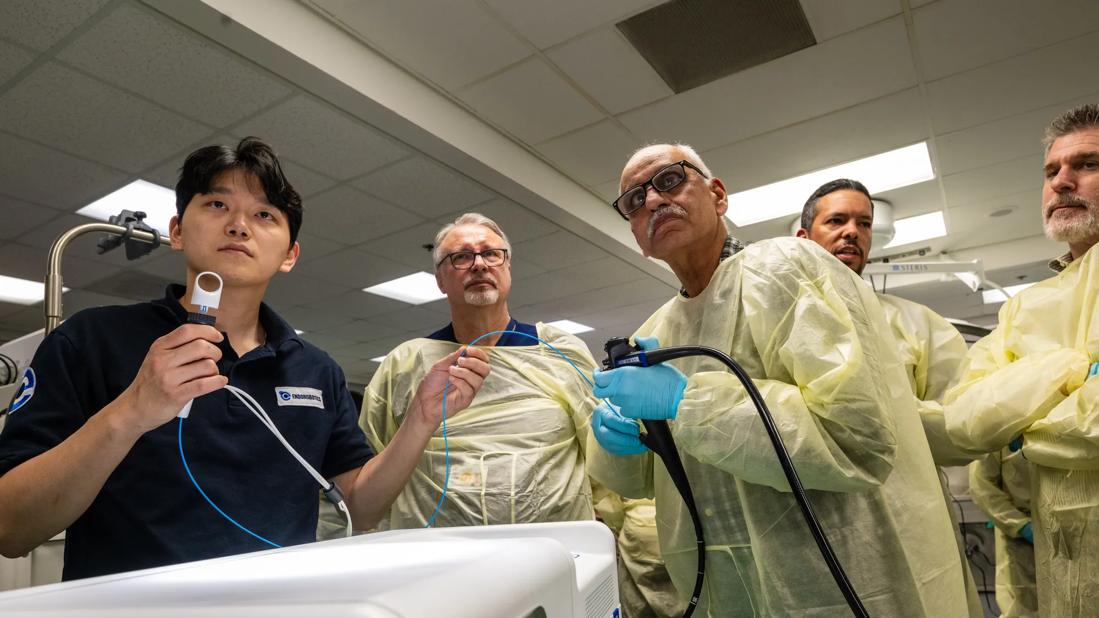With innovative protocols in place, patients see benefit

Less than a year into his task of standardizing endoscopy efforts throughout the Cleveland Clinic enterprise, John Vargo, MD, MPH, is caught in a whirlwind. After having visited 10 locations in 10 months, he was looking forward to relaxing over the holidays.
Advertisement
Cleveland Clinic is a non-profit academic medical center. Advertising on our site helps support our mission. We do not endorse non-Cleveland Clinic products or services. Policy
“I think I’m going to leave my cell phone in my office for a week, so I can enjoy my family in peace and quiet,” he joshed.
Exhausted but energized, the respected endoscopist calls his new project “rewarding and a lot of fun.”
“It is the right thing for our patients,” he says. “Our goal is to provide every endoscopy patient with the best care for the best value in a safe, comfortable environment. No matter where in the enterprise an endoscopy is done, the equipment, training and reprocessing will be the same.”
Every year, Digestive Disease & Surgery Institute staff physicians perform 85,000 endoscopy procedures in 22 Cleveland Clinic hospitals, ambulatory surgery centers and endoscopy centers worldwide. Although outcomes have been very good, institute Chair Conor Delaney, MD, PhD, and Department of Gastroenterology, Hepatology and Nutrition Chair Miguel Regueiro, MD, felt the time was right to standardize endoscopy procedures enterprise-wide. Their goals were to augment and ensure quality, while minimizing waste and lowering the cost of procedures.
They tapped Dr. Vargo for this important job, knowing his combination of endoscopic and administrative experience with patient advocacy made him the ideal candidate.
After gathering all stakeholders to identify what needed to be done, Dr. Vargo established committees with enterprise-wide oversight to carry out the tasks. To date, these have included:
Advertisement
In an innovative approach to resource stewardship, Cleveland Clinic pulmonologists and otolaryngologists were invited to join GI endoscopists on an Endoscopic Capital Communications Committee. While these like-minded practices use different scopes, all need cleaning, maintenance and periodic replacement.
“We share how we approach our inventories, strategize how best to deploy our equipment enterprise-wide and establish best practices to implement. This has helped us not only to understand our immediate capital needs, but in the budgeting process for two to five years down the road,” he says.
“The concept of an endoscopic operations team may seem foreign, but it has paid dividends in patient care, cost minimization and value optimization from patient and system perspectives.
“The bottom line is that when different locations with endoscopic practices get together and talk, they can solve major problems, standardize procedures and learn from best practices,” says Dr. Vargo.
Advertisement
Advertisement

Improved outcomes stem from shifting priorities and a deeper understanding of the anatomy

Customized interventions for diverse GI disorders are enhancing patient outcomes

Causes, symptoms and solutions for chronic upper abdominal pain

Tips on how to recognize the condition and budesonide treatment guidance

Insights on guiding treatment decisions

Strong patient communication can help clinicians choose the best treatment option

Brief pearls for diagnosis and management of ascites and relevant conditions associated with decompensated cirrhosis

Hard-to-treat GI disorders benefit from multidisciplinary approach